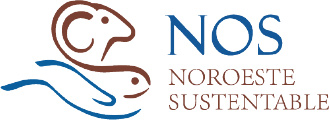In the new panel format, Iván Carrillo moderated the talk "Breakwater" in which we brought together three experts to talk about the past, present and future of the Upper Gulf of CaliforniaThe company's current challenges, and the challenges it faces in the coming years.
The environmental consultant and physicist from UNAM participated in the talk, Luis Fuello McDonaldthe director of the Gulf of California Marine Program, Catalina López Sagástegui, y Carlos Tirado Pinedadirector of the Fishermen's Alliance AGC, and leader representative of the fishing cooperatives of the Gulf of Santa Clara.
With respect to the past, Fueyo McDonald recalled that this is a region with high primary productivity, despite the fact that the waters of the Colorado River were dammed from 1929 onwards, ceasing to flow through the Gulf of Californiaand, in spite of the construction of four dams, one of which is in Mexico. However, the Upper Gulf remained a region rich in primary productivity that generates a large amount of food to support an abundant marine wealth, in terms of crustacean fish and mollusks, as well as the presence of marine mammals and sea turtles.
Towards the first half of the 20th century, he says, three important fishing villages were built: San Felipe, The Gulf of Santa Clara y Puerto PeñascoThese gave support to the growing productive activity, starting with sharks, and then a growing importance of shrimp production, without leaving aside the presence of important mollusks, on the side of Puerto Peñasco and San Felipe.
"The interest in the vaquita begins with its discovery, from the registration of vaquita carcasses in 1958, and from then on, the study of the vaquita begins. By the end of the 60s and 70s, there was a drop in the production of totoaba, one of the most important fish in the region, and an important protection activity began".
"In 1970 there was a permanent ban on totoaba, in 1992 the Upper Gulf of California Reserve was decreed, and since 1995 there has been a successive chain of regulatory acts to ensure that fishing activities are consistent with the protection and conservation of the vaquita," explains Fueyo MacDonald.
Catalina López Sagástegui, a researcher at the U.S.-Mexico Institute of the University of California at Riverside, explains that since the 1980s there has been a maturity in the perspective of conservation and resource management.
"We see that aspects that were not taken into account before are beginning to be involved. Multidisciplinary studies are beginning to gain ground. Now the social part is also being added," he says.
Present and future
At present, experts agree, beyond the impact generated by the "standstill" caused by the COVID-19 contingency and the consequent economic crisis, there is a particular crisis in the Upper Gulf that has put at risk the vaquita porpoiseand the gains in totoaba have been lost, adding an additional fishing crisisThe company has been involved in a lack of control of fishing activities and a failure to comply with the regulations governing fishing activities in the area.
For this reason, Fuelyo McDonald points out that in the future, and in order to have an implementation plan, a good diagnosis is required, which should start with the massive start of illegal totoaba fishing at the end of 2012.
"We had already recovered this resource and we could have taken advantage of it based on the regulations that govern it. Illegal fishing beat us. The most important aspect is the participation of society and particularly of the associations. We have to open spaces for dialogue and a vision for the future".
"It is important to try to recover, but by force it will not work. I would recommend that in the Guidelines for the organization of the Intergovernmental group, it be taken as a central element of the search for permanent dialogue with the fishermen, and the reconstruction of the social fabric," he said.
For Catalina López, the challenge is complex, as it requires the participation of everyone: civil society, governments and, above all, the fishing sector that uses the resources.
"We need to create strategies and actions that address emergencies, but at the same time not lose sight of the welfare of the communities, which in a normal fishing year may be generating, in the Gulf of Santa Clara, over one million pesos in profits per boat per year, on average; while in San Felipe, 900 thousand pesos on average per year. This is money that, if it returns and enters the community, generates an economy that sustains these societies," he warns.
For his part, Carlos Tirado, director of the Altos del Golfo de California fishermen's alliance, indicates that, with the fishing activity halted by the pandemic, the economy is at half speed, which burdens the community, the businesses in that community, and the productive chain.
"The fishermen want to know what the governments will say about the issue, what alternatives will be proposed for the solution, active communities with wellbeing. We want the programs to really apply to the communities of Santa Clara, San Felipe and Puerto Peñasco. The law itself indicates that we are the beneficiaries of living in this area," he said.
Follow the talk in the following link: https://www.youtube.com/watch?v=b4R7gv0hnYo&t=559s
Learn more about the panelists:
Luis Fueyo Mac Donaldphysicist by UNAM, environmental consultant, has 37 years of experience in environmental, biodiversity, fisheries and environmental law enforcement.
Twitter: @LuisFueyo3
Catalina López SagásteguiDirector of the Gulf of California Marine Program and researcher at the U.S.-Mexico Institute of the University of California, Riverside.
Twiter: @catlosa_
Carlos Tirado PinedaDirector of the Fishermen's Alliance AGC and leader-representative of the fishing cooperatives of the Gulf of Santa Clara.
Twitter: @CarlosT12351108






